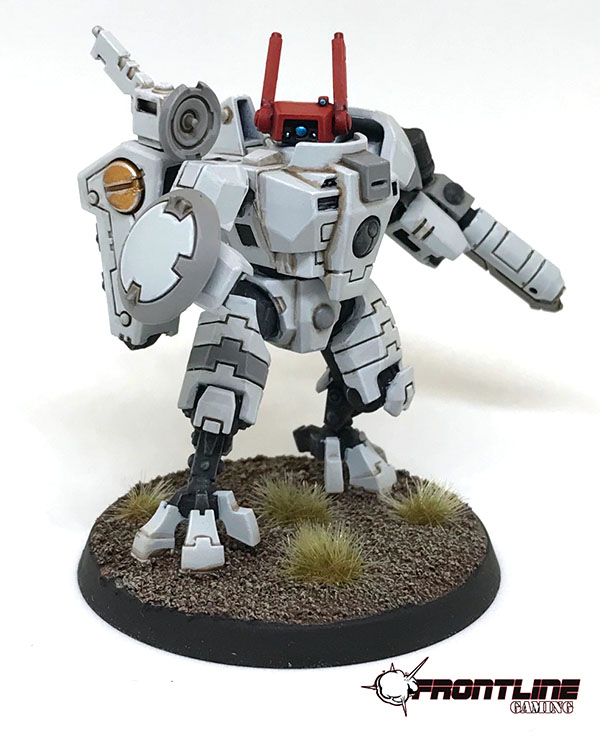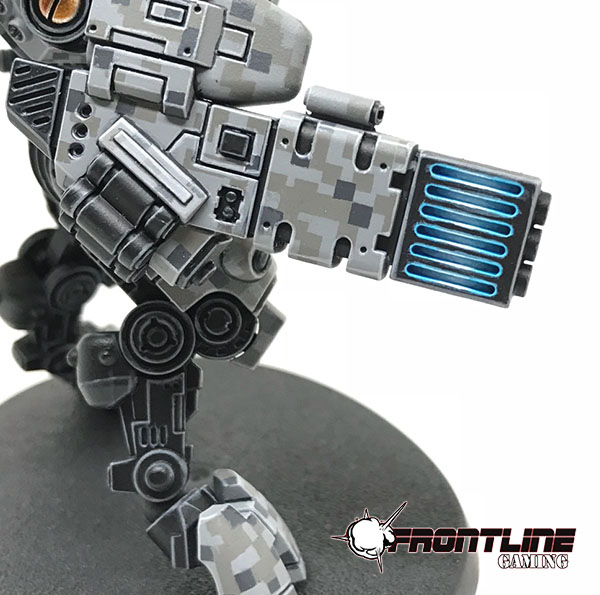
A few weeks back, on the weekend of the 24th of April, another intrepid T’au Empire player, Ben Neal, put in strong showing at a tournament, the Olympus Games GT, over in Cheyenne, Wyoming.
Neal came second in this tournament, which in anyone’s book is a very respectable finish, but a second place is even more impressive when we take a brief glance down the top ten. Neal finished above Drukhari, Death Guard, and Sisters to name a few. All in all, a great showing. Well done, Ben Neal.
First things first, if you’d like the exact army list, you’ll find it here on the ever-reliable 40kstats.com.
Next, let me mention the excellent Auspex Tactics channel. I’ve first found this list through this excellent video, in which we go through a competitive list for each faction.
As usual, I’m not going to take a deep-dive into this list, but, rather, I’m going to discuss the broad themes of the list and what it can do well. Neal hits many of the standard — as far we can use that word with T’au in 9th — competitive elements in the codex, but he also makes one or two interesting choices that I want to point out.
One of the more positive ways to look at a result like this with a faction like the T’au is the following: even with a faction that struggles to play the game, there are still ways to get results out of the models.
Granted, this isn’t really true if you happen to be a T’au player with an 8th edition style army. Those Commanders, Riptides, and Drones simply do not work well in 9th edition 40k.
We T’au players used to take three Riptides each armed with a Heavy Burst Cannon. Now, we seldom see more than one, and this Riptide will almost certainly be armed with the Amplified Ion Accelerator. The AIA is a great weapon for the 9th edition meta, but a Riptide armed with one of these weapons is nowhere near as effectives as three Riptides armed with HBCs was back in 8th.
What’s more, we T’au players used to take three Commanders, usually armed with Cyclic Ion Blasters, and, to be fair, the T’au Commander can still do some work. However, we seldom see three of these boys on the battlefield anyone. Instead, we tend to see Farsight, who has very little offensive capability in the shooting phase, and one other Commander.
And we needn’t talk much about Drones in 9th edition. Games Workshop clearly did not like the Drone spam lists — and, to be fair, I don’t blame them — and made Tactical Drone squads prohibitively expensive. 20 points per model is simply absurd.
That was 8th, but if you’re anything like me, you’ve been steadily moving away from this style of T’au list. Of course, the more time and money that one has greatly affects one’s ability to buy and paint new models quickly. Shifting to a new paradigm isn’t easy for a lot of players.
T’au players, then, can get results from their models — but only if they have the right models.
And what are these right models?
A brief glance at Neal’s list yields few surprises. We find a Farsight Enclaves patrol detachment and a Vior’la patrol detachment. In the Farsight detachment, we have Farsight himself and an XV8 Commander with three CIBs and an Advanced Targeting System. In the Vior’la detachment, we have Aun’shi with Academy Luminary.
With a little bit of tweaking here and there, this setup is becoming more and more common for competitive T’au lists.
Commander Farsight is a particularly important element. Allowing the T’au player to use the Mont’ka Master of War ability twice per game is absolutely vital. Indeed, this ability grants more flexibility on the tabletop. While Farsight himself may use Mont’ka twice, he isn’t obliged to. The other Commander may call Mont’ka once, and then Farsight may call Mont’ka for a second time.

The ability to Fall Back and shoot — which is what Mont’ka allows, of course — for two turns out of five forces opponents to carefully consider where they engage with the T’au. While the Farsight and Vior’la Overwatch isn’t nearly as deadly as T’au Sept Overwatch — only T’au Sept models hit on 5s — the ability jump out of combat twice is more of a disincentive to a charging opponent than the Overwatch itself.
Each patrol detachment features 10 Breachers in a Devilfish. Again, there isn’t anything particularly surprising here. Many readers will know that the Vior’la Breachers have access to a double-shoot stratagem, Hot Blooded, for the cost of two Command Points.
And for the cost of a further CP, the T’au player may increase the close range profile of the Breachers’ Pulse Blasters to 15″. Typically, this will result in 40 Strength 6, AP -2, Damage 1 shots, which is nothing to sniff at. Granted, 9th edition has plenty of deadlier units, but when used against the appropriate target, Vior’la Breachers can be highly effective.
I’ve already mentioned the Riptide that Neal takes in this list. The AIA-armed Riptide can sit on 3+ invulnerable save for most of the game without breaking a sweat. What’s more, the Support Systems of the Counterfire Defence System, allowing the Riptide to reroll hits in Overwatch, and the Velocity Tracker, granting +1 to hit against units with the Fly keyword, make this unit a valuable asset in the 9th edition meta.
Before we get to the main event of this list, I want to mention the eight Vespid Stingwings that Neal takes. While the model itself leaves a lot to be desired, I am a fan of the Vespid.
There isn’t really anything exceptional about this unit. Their shooting ability is only slightly better than their distinctly average melee ability, but that’s not why these models are in the list.
With a very respectable Move of 14″ and the option to enter play via deepstrike with the Plunge from the Sky ability, these two small squads give Neal ways to play two secondary objectives: Engage on all Fronts and Deploy Scramblers.
Quick, unassuming infantry models are particularly useful for the Deploy Scramblers secondary. With such a small unit footprint, T’au players can threaten a lot of the board with these four models. All that the T’au player needs to do is drop them down on the correct place on the battlefield and declare that this unit will take the Deploy Scramblers action.
What’s more, if the opponent successfully screens out his deployment zone, Vespid are quick enough to threaten the opponent’s backfield even if they are deployed in the mid-board. Of course, this is a more risky play — Vespid won’t stand up to any sustained firepower — but it’s certainly an option.
After they’ve done their job, they’re free to roam around the board being a nuisance and scoring points for Engage.
I must admit, I do have a soft spot for quick infantry with the Fly keyword. The game is won is the Movement phase, and two or three small squads of Vespid give T’au players just a couple more options than they otherwise would have.
Finally, we come to the main event of the list. If you’re into competitive 40k, this will come as no surprise: nine XV8 Crisis Bodyguards.
By now, most people know what this massive unit does. As usual, we find that Neal employs the Veteran Cadre stratagem to increase the unit’s WS to 4 and BS to 3 for the cost of two CP, and we find that Neal also employs the Reactive Countermeasures stratagem, allowing models in the unit that are armed with Airbursting Fragmentation Projectors to ignore AP -1 and -2 on incoming fire.
However, Neal takes different weapons than which we would normally see. For example, when Richard Siegler has run this unit, he has taken an AFP on each model. But Neal takes AFPs on five of the nine Crisis Suits, taking three Fusion Blasters on the remaining four.
This setup gives Neal some useful flexibility. The twelve FB shots is enough to do some serious work against many of the game’s nastiest units, and the AFPs give the unit a certain amount of threat in the Overwatch phase — the AFP does not require the bearer to make a hit roll. While the AFP’s profile isn’t particularly potent — Strength 4, AP 0, Damage 1 — the amount of shots that each model throws out can be a serious problem for light and medium infantry looking to charge the squad.
It’s brilliant to see the T’au at the top tables again, and I congratulate Neal for taking the T’au to such a strong finish at a competitive event, but I don’t want to be overly optimistic here. The T’au still need a new codex, and T’au players have an uphill battle if they want to compete.
The next few months are going to be a slog for T’au players. There’s no doubt about it. The new codex is still a ways off. But Neal has handily demonstrated that there is some play left in the codex yet. You’ll have to scrap for each and every win, but until the sunlit uplands of a 9th edition codex, we need to make do with the tools that we have at our disposal.
And remember, Frontline Gaming sells gaming products at a discount, every day in their webcart!




It is nice to see that TAU can do some (greater) good showing.
Regarding AFG it does require a hit roll, but if you are doing 12D6 overwatch shots, you are bound to roll some 6’s